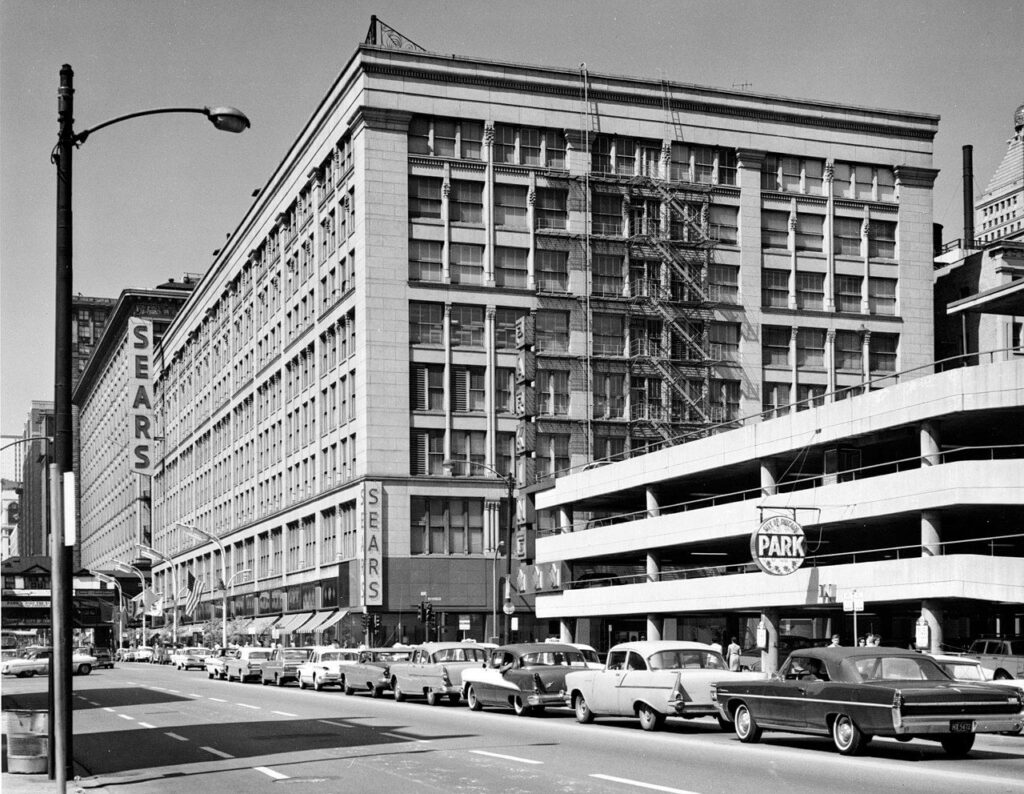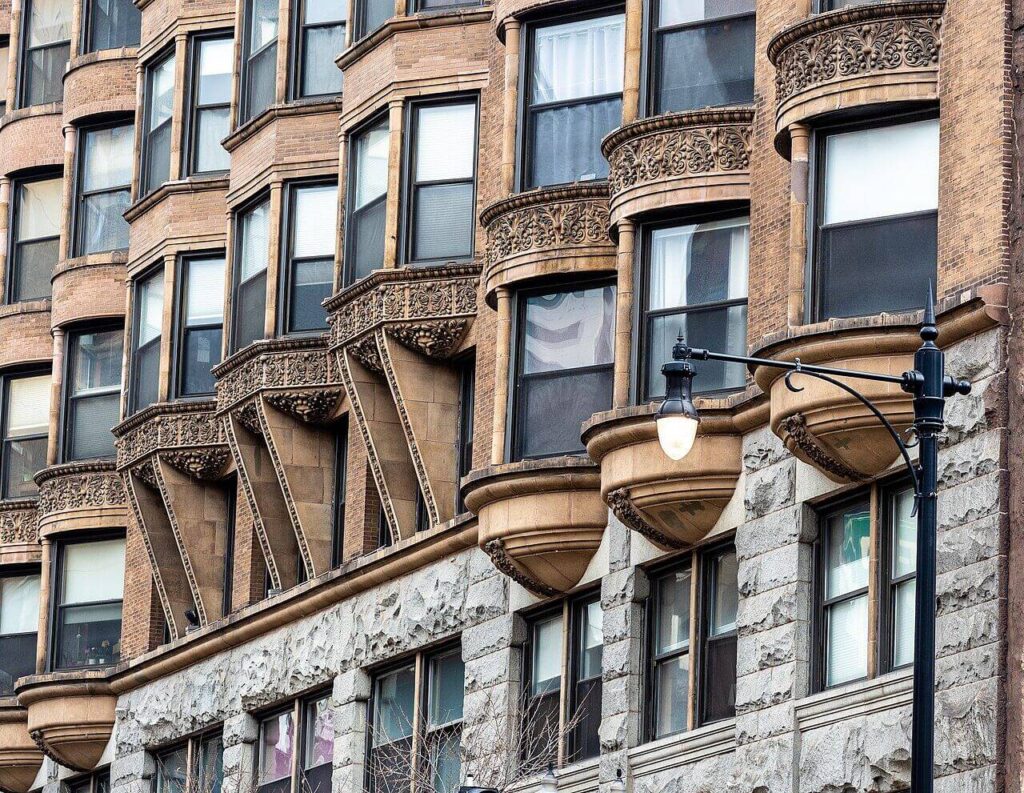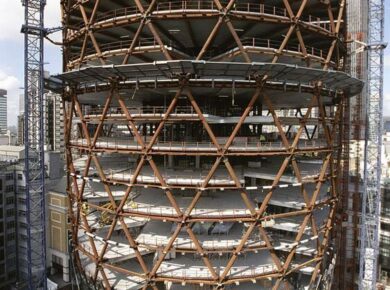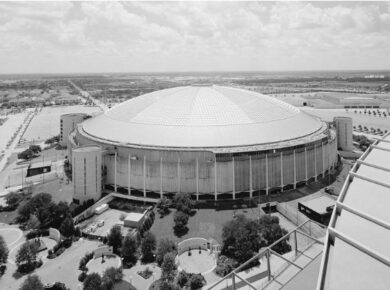William Le Baron Jenney (died June 15, 1907) was an American architect and engineer who is known for building the first skyscraper in 1884.

Chicago Architectural Photographing Company/Wikimedia
Jenney is best known for designing the ten-story Home Insurance Building in Chicago. The building was the first fully steel-framed building, and is considered the first skyscraper. It was built from 1884 to 1885, enlarged by adding two stories in 1891, and demolished in 1931. In his designs, he used steel columns and beams, instead of stone and brick to support the building’s upper levels.

@ Cervin Robinson, Photographer
The Home Insurance Building was the first example of a steel skeleton building, the first grid of iron columns, girders, beams and floor joists ever constructed. The Home Insurance Building also set the pace for the Chicago School, many of whose chief exponents—including Louis Sullivan, Daniel Burnham, John Root, and William Holabird—served at one time in Jenney’s office.

@ ajay_suresh
The steel needed to support the Home Insurance Building weighed only one-third as much as a ten-story building made of heavy masonry. Using this method, the weight of the building was reduced, thus allowing the possibility to construct even taller structures. Later, he solved the problem of fireproof construction for tall buildings by using masonry, steel, and terra cotta flooring and partitions.

@ Marc Rochkind
According to popular story, one day he came home early and surprised his wife who was reading. She put her book down on top of a bird cage and ran to meet him. He strode across the room, lifted the book and dropped it back on the bird cage two or three times. Then, he exclaimed: “It works! It works! Don’t you see? If this little cage can hold this heavy book, why can’t an iron or steel cage be the framework for a whole building?”
About the Author:

Bruno Dursin – Managing Director at Believe in Steel. Bruno has more than 30 years of experience in promoting steel & steel solutions. His clients benefit from his extensive network within the building industry.



